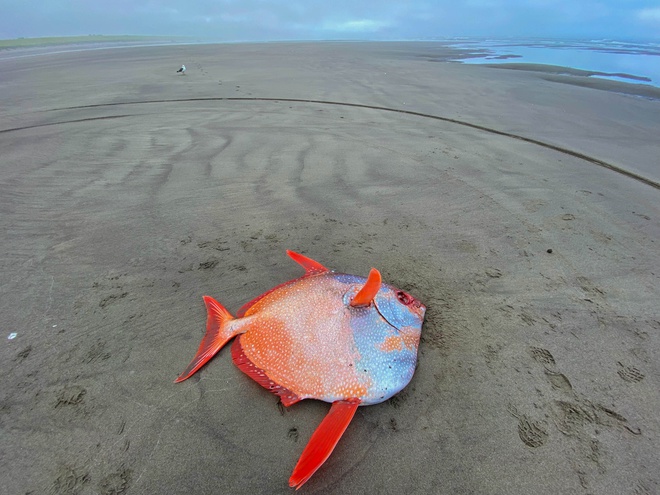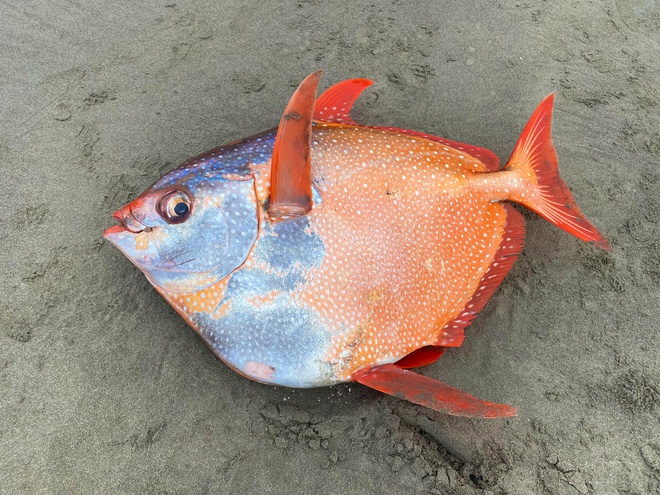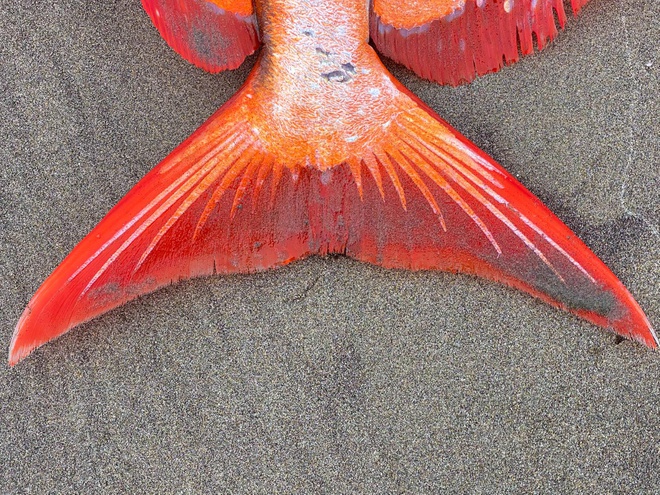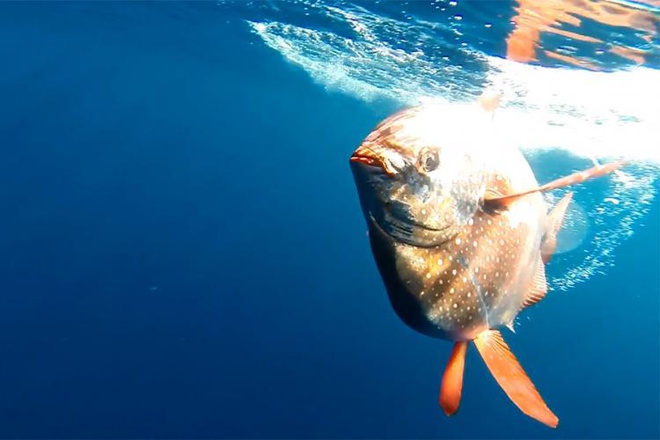
This individual sunfish is more than 1 meter long and weighs nearly 50 kg. The fish’s body is silver mixed with orange, dotted with white round spots. The fish’s eyes are large and yellow. According to Ms. Tiffany Boothe, assistant director at Seaside Aquarium, this is the first time she has seen this fish on the coast. Photo: Seaside Aquarium.

Ms. Boothe is not sure what caused the fish’s death. However, she believes the fish died near shore because the fish’s body was in good condition. Photo: Seaside Aquarium.

“The fish caused a stir at the marine park. The public is encouraged to come admire this beautiful and strange fish,” the Facebook page of Seaside Aquarium posted. Photo: Seaside Aquarium.

The fish will be stored in the freezer until the beginning of the new school year, before being dissected with the participation of a group of students. Ichthyologists want to collect anatomical data to understand more about this fish. Photo: Seaside Aquarium.

Sunfish (also known as opah fish) is a species of ray-finned fish. This fish usually lives in deep sea layers. This fish has an average weight of nearly 50 kg and a body diameter of nearly 1 m. Photo: Seaside Aquarium.

The website of the US Oceanic and Atmospheric Administration (NOAA) describes this fish as having a strange shape, round, flat and silver-gray in color. As it descends to the belly, the silvery gray color changes to orange with white spots. The fish’s fins and mouth are red, its eyes are large and have yellow edges. Photo: Seaside Aquarium.

In the wild, sunfish live in areas with tropical and temperate climates. In the US, this fish is commonly found in Southern California, Hawaii and islands in the Pacific Ocean. Photo: USA Today.

According to biologist Heidi Dewar, the stranding of such a large fish is quite rare. “I don’t think a sunfish this size would appear off the coast of Oregon,” she said. Climate change may be part of the cause. “Many marine species migrate north as ocean waters warm.” Photo: NOAA.